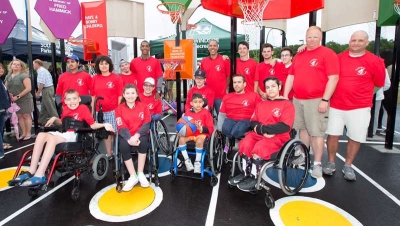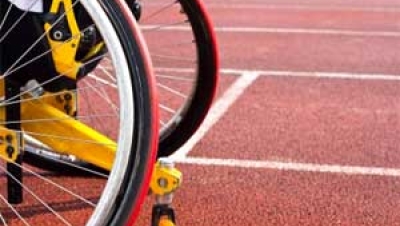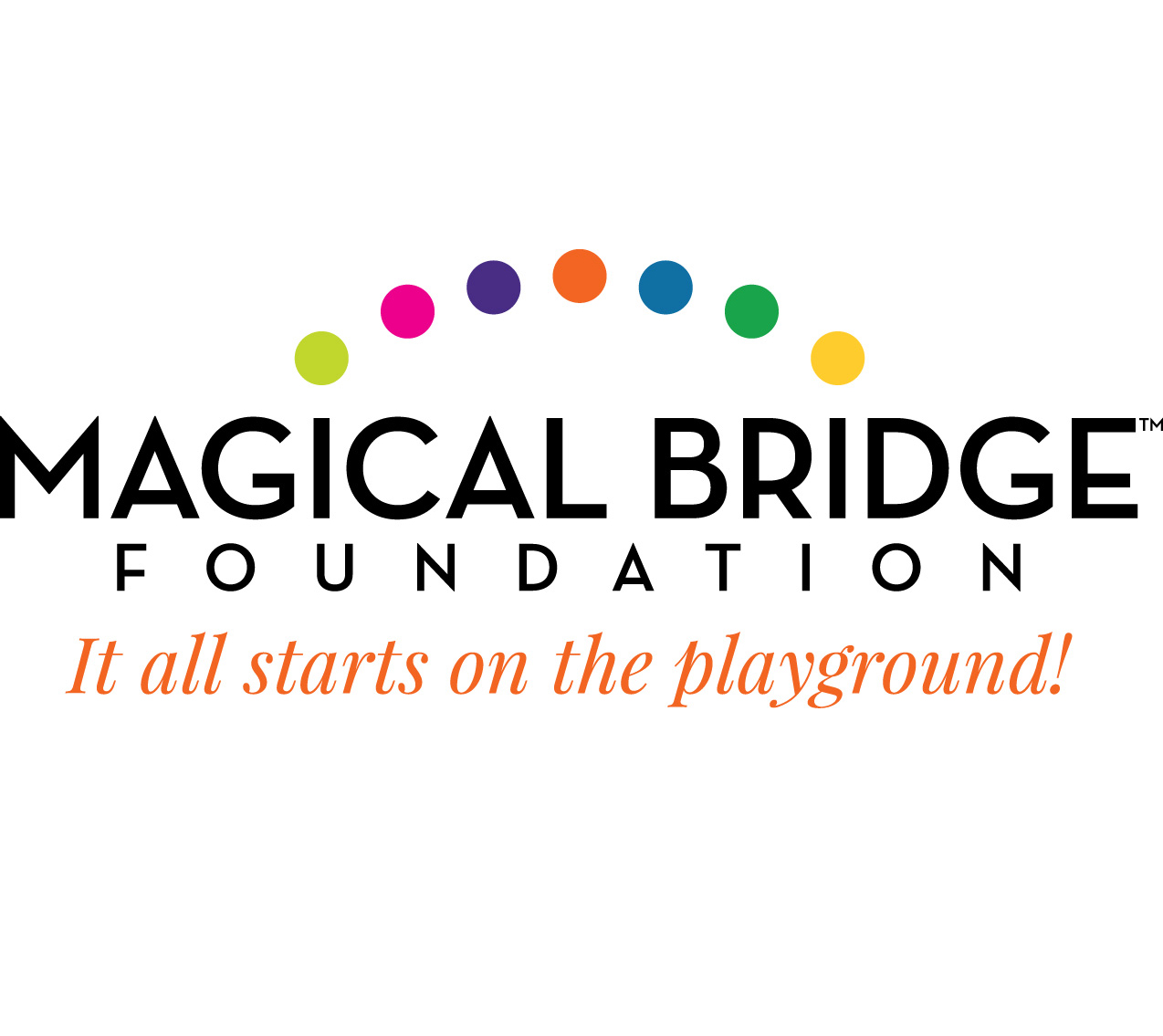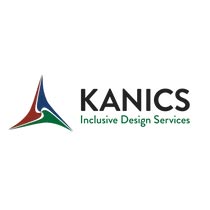Owners of playgrounds have been aware of the need to meet the ADA for more than 10 years, and consultants, suppliers and those responsible for developing the procurement specifications have all weighed in on what to do in the playgrounds that have been installed and those that are yet to be installed.
Sadly, many playgrounds that have been installed to be “accessible” do not meet the requirements of the ADAAG. This is of particular concern with the 2010 ADA Standard for Accessible Design, which will require enforceable compliance as of March 15, 2012. Essentially the accessible route in a playground will be 18 to 28 percent of the required protective surfacing, depending upon the layout of the play structures.
It is important that the playground owner understands that the actual playground is to meet the Standard and compliance will be measured in the field and not on the plan that was designed and intended to be in compliance.
As a result, performance testing, inspections, and maintenance will be critical to every owner. This will require a surface that performs to specific requirements at the time of installation and throughout the life of the playground. For many years the suppliers of playground protective surfacing have indicated that their product will meet the ADA. Websites abound with statements like “ADA approved” or “ADA certified,” which does not exist in reality, or statements of compliance to parts of the ADA, without stating non-compliance or issues related to other parts or continued compliance.
Planning For Compliance Not Complicated
Planning for compliance to the ADA is not complicated; however, choices might not be as easy as they once seemed when it comes to the implementation and ongoing maintenance of the plan. The obvious choices will not necessarily be the right choices without comprehensive specifications, maintenance procedures and warranties. Many owners select synthetic surfaces such as poured-in-place, tiles, turf, bonded rubber, bonded wood fiber, etc., as the surface system for the accessible routes. Properly installed, these systems can meet the ADA requirements at the time of installation and into the future. Failure can result in expensive changes in the future as these systems carry a high initial capital cost.
As in every purchasing decision, the long-term cost, consisting of the initial capital cost, repairs, replacement and maintenance over the life of the playground, must be taken into consideration. It does not benefit a client to purchase the highest capital cost system only to find that they must provide significant repairs or replacement within three to five years of initial installation.
The key to deciding which surfacing system to purchase will come down to understanding the requirements for the accessible route and how to be best achieve the end result, not only at the time of installation but well into the future. The most important requirement of the surfacing system will be the knowledge and understanding of what constitutes an accessible route and what will be expected of the owner over time to maintain the route to compliance.
Maintenance procedures, just as installation requirements, must be stipulated by the manufacturer/supplier and each will have costs associated with them that many agencies will not ask about during the surface selection and purchasing process. The costs are not anticipated by many owners until it is too late to do much about the consequences of their uninformed purchasing decision.
Using ASTM Guide As Reference
Since poured-in-place surfaces are often the choice of owners, the information regarding the ADAAG accessible route has been added to the recently published ASTM F2479-11, Standard Guide for the Specification, Purchase, Installation, and Maintenance of Poured-In-Place Playground Surfacing. The information in the Annex is a summary of all of the requirements and exceptions for the accessible route as provided for throughout the 2010 ADA Standard for playgrounds. The main part of the ASTM F2479 Standard will provide assistance in purchasing a product that will meet the performance of the ADA and the financial resources of the owner of the playground. This document is available at www.astm.org and should be an integral part of any landscape architect, playground and surfacing supplier and owner’s library relating to their provision of playgrounds.
This article will discuss the potential problems the synthetics and particularly the poured-in-place surface can have and where the potential result is failure of the ADA Standard.
Impact attenuation of the accessible route as outlined in the ASTM F1292, Standard Specification for Impact Attenuation of Surfacing Materials Within the Use Zone of Playground Equipment, is a requirement and the owner must first acquire from each and every potential supplier their Test Certificate for compliance to ASTM F1292. Although not a requirement, many suppliers will have IPEMA test certificates for various critical heights, while others will have independent testing results. It must be understood that the critical height is the height “below which a life-threatening head injury is not likely to occur” and failing to exceed the critical height for the fall height within the equipment use zone will be a failure of the ADA.
Additionally, the owner must realize that the fall heights for structures in ASTM F1487, Standard Consumer Safety Performance Specification for Playground Equipment for Public Use, are in many cases lower than those in the CPSC Handbook on Public Playground Safety and in states and other public agencies where compliance to the CPSC is required, this will affect the selection of the critical height of the surface.
Other Considerations
Some other considerations when developing purchasing requirements would be to stipulate a better performance at the time of installation. This can be accomplished by specifying lower values for the maximum allowable impact attenuation thresholds for this playground rather than the maximum values for g-max and HIC, 200 and 1000 respectively set in ASTM F1292.
The owner can also specify a drop height higher than the fall height for the testing in the field as encouraged to do in Section 4 of ASTM F1292. Since installed surfaces and laboratory samples are often not made by the same person or in the same manner, it would be prudent for the owner to test the installed surfaces in the field to contract requirements. Although not always possible, holding most or all of the value of the surface until successful completion of testing will help resolve failure quickly.
It may also be prudent to specify in your written purchasing documents and contract a written warranty for five years or longer for compliance with F1292 in the field as the ADA standard is essentially a field requirement. ASTM F2479 has guidance wording for a warranty. It also states that the surface shall comply with ASTM F1292 in the field at any time during the life of the playground. Failure to do so will be a failure of the ADA accessible route requirements and ultimately require the owner to make it compliant.
One aspect of the current ADA requirement for a “firm and stable” surface as measured in the field and supported by ASTM F1951-99, Standard Specification for Determination of Accessibility of Surface Systems Under and Around Playground Equipment, in the laboratory, is not generally a problem for any synthetic; however, there are other aspects of the accessible route that are problematic. Anywhere there is a transition from one surface to another or within the system due to shifting bases, swelling or sinkage, the change in vertical height shall not be greater than one-half inch with the lower quarter-inch allowed to be vertical and the upper quarter-inch on a 1:2 slope. Additionally, there shall be no gaps within the system that are greater than one-half inch wide or deep.
In the case of carpet or artificial turf, the exposed pile height cannot be greater than one-half inch. Tiles and mats can be vulnerable to shifting and gapping and thus result in a failure. This is particularly the case where the tiles are not supported at the perimeter of their installation and the surrounding loose materials, EWF, sand, woodchips, loose rubber, pea gravel, etc., move from the side and allow the tiles to sink. This is not likely the case for poured-in-place that follows the installation and edge guidance found in ASTM F2479.
Accounting For Slopes
The last major requirement for the 60- by 80-inch vertical rectangular clearance space of the playground accessible route will be the running and cross slopes. First, where there is a slope of greater than 1:20 (5 percent) the surface becomes a ramp and will require the installation of handrails. The actual playground protective surface is allowed to have running slope as steep as 1:16 (6.25 percent) and when this ramp is within the use zone as defined by ASTM F1487, it is exempt from the installation of handrails.
The accessible route cross slope and the slope in all directions where a person is expected to transition from a mobility device to a transfer system or play component must be less than 1:50 (2 percent). This will be a particular problem where a designer may have built the playground on a sloped ground expecting to have a running slope up to 1:16 only to find it conflicts with cross slope or transition area slope.
A further consideration for the playground designer and structure and surfacing installers is that where they have already been concerned with regard to the exit height of slides, overall height of upper body equipment, now they have the transfer system whose height above the protective surface must be in the range of 11 to 18 inches. Getting all of these into compliance on any site regardless of the existing site topography may well be difficult to execute in the field while coordinating everyone involved in the installation process. It must be remembered that in many playgrounds the manufacturer/supplier and installers are not likely to be the same crew or even from the same contractor.
The Playground Accessible Route is generally not a complicated issue when the owner and his consultants take the time at the very beginning of the purchase and specification process to require strict compliance, applying best practice performance guides, field testing and warranties specific to performance. There may be the need for the addition of a technical consultant related specifically to ADA compliance on the team. This cost should be money well spent as opposed to the failure of the installed system and the associated costs.
Having copies of the ASTM standards and other documents referred to is going to be essential to the user library. ASTM standards can be purchased individually; however, it might be advantageous to join ASTM and receive the standards volume 15.07 for free and receive some of the above standards and more in your membership.












Add new comment